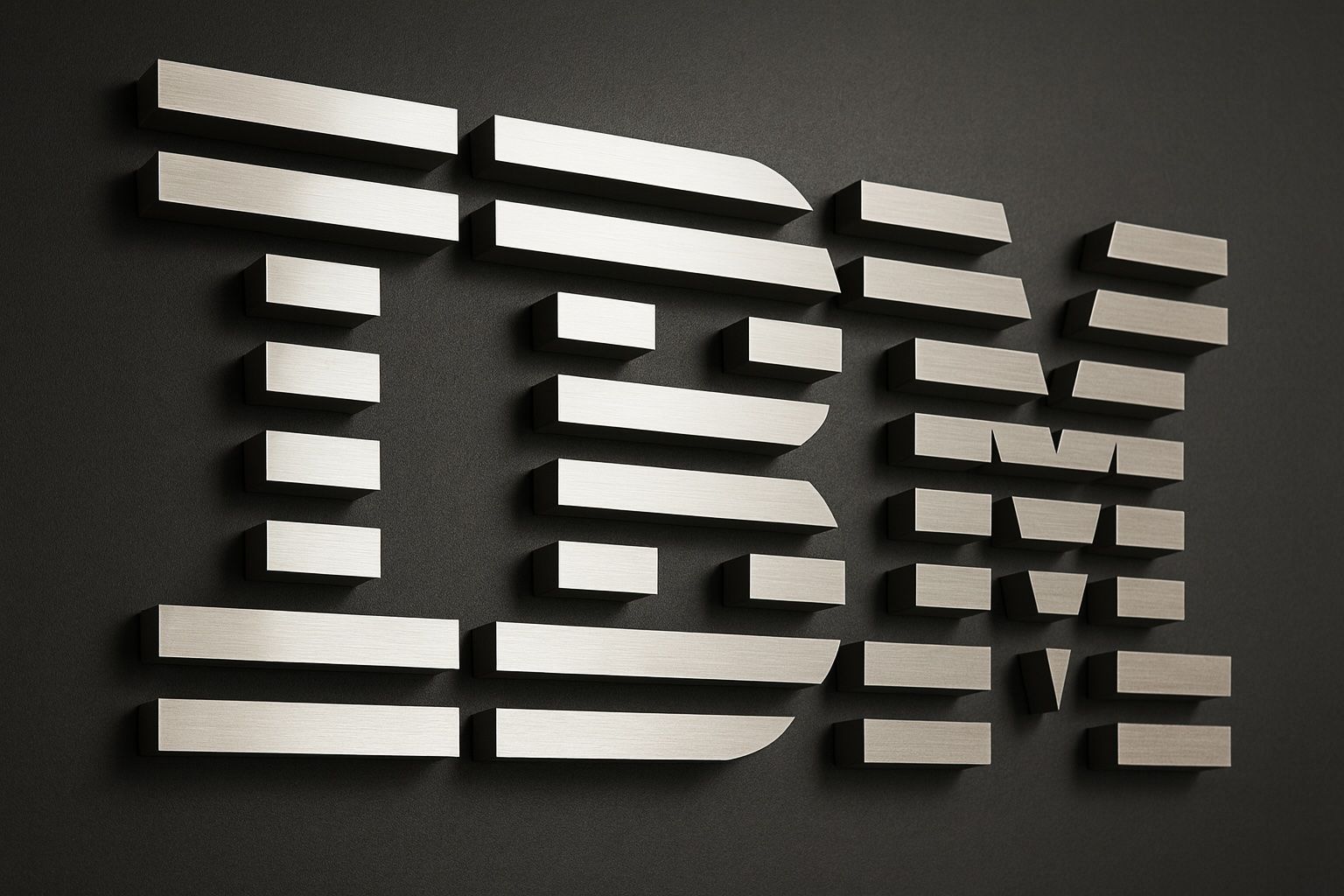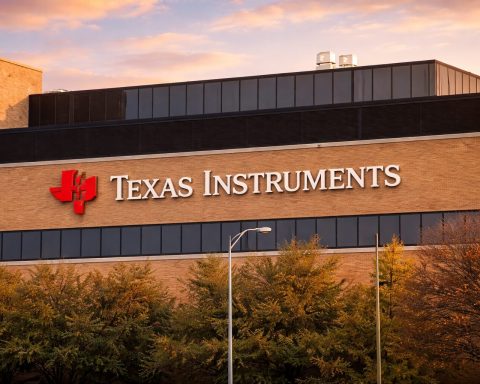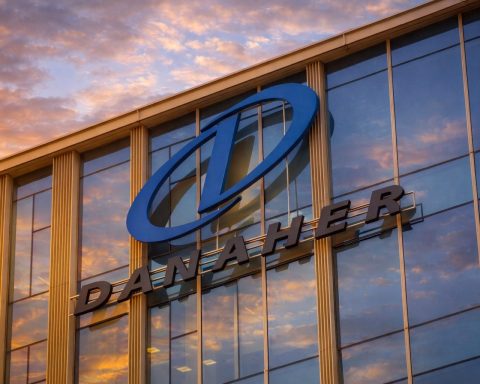- Stock Price: IBM (NYSE:IBM) trades around $307 on Oct. 25, 2025 [1]. The stock is on a tear – up roughly 28–30% year-to-date [2] [3] and recently hit multi-year highs in the high $290s–$300s [4] [5].
- Recent Swing: After jumping about 8% on Oct. 24 (amid a major AI/quantum breakthrough [6]), IBM’s shares pulled back slightly in profit-taking. The stock opened Oct. 25 near $307 (+7.9% on the day) [7]. Overall, IBM has returned ~30% this year [8] [9] – far ahead of the S&P 500.
- Drivers: Investors are cheering IBM’s push into AI, cloud and quantum computing. Recent deals include a supercomputing partnership with AMD (Oct. 1), new Granite 4.0 AI models (Oct. 2), a tie-up with Anthropic’s Claude (Oct. 7), an India cloud partnership with Airtel (Oct. 15) and new IBM–Oracle AI “agents” (Oct. 16) [10] [11]. A groundbreaking IBM research result – showing a key quantum error-correction algorithm running on standard AMD chips – was announced Oct. 24 [12], which CEO’s lab director Jay Gambetta called “a big deal” [13].
- Recent Earnings: IBM’s Q3 2025 results (reported Oct. 22 after market) beat Wall Street’s estimates: revenue of $16.33 B vs. $16.09 B expected, and EPS $2.65 vs. $2.44 [14]. Management raised its full-year revenue outlook to “more than 5%” growth [15]. Strength in AI-optimized mainframes and consulting offset a slowdown in cloud software: Red Hat (hybrid cloud) sales growth slipped from 16% to 14% year-over-year [16].
- Dividend & Valuation: IBM remains a Dividend Aristocrat, paying $6.72 annually (≈2.3% yield) and raising its payout 29 years in a row [17]. The flip side is valuation: IBM trades at a high forward P/E (~24–25× [18], well above its long-term norm and peers), leaving “little room to miss” on execution [19] [20].
- Analyst Outlook: Wall Street is cautiously optimistic. The consensus rating is roughly Hold/Neutral, with an average 12-month target around $280–$286 (near current price) [21] [22]. Price targets span a wide range (~$200–$350). Bullish analysts (Goldman Sachs Buy @$350 [23]; Bank of America ~$310; Wedbush ~$325 [24]) argue IBM’s AI/cloud momentum can lift shares higher. Bears point to the lofty valuation and intense cloud competition – their downside targets are often in the $200–$280 range [25] [26]. For example, Morgan Stanley (Oct. 15) reaffirmed an Equal Weight rating with a $256 target, noting IBM is trading at a premium to peers [27].
- Risk Factors: Despite the upbeat narrative, several experts caution that much good news is already priced in. As Dan Morgan of Synovus Trust put it, after such a rally “there’s just not a lot of room to miss” [28] [29]. Analysts at J.P. Morgan and others have warned that any further cloud/Red Hat disappointment could spook investors again [30] [31].
Stock Surge Fueled by AI, Cloud and Quantum
IBM’s stock has roared back to life in 2025. After languishing for years, the shares have climbed from the low $200s in mid-2025 into the high $280s by October [32] [33]. This rally has been driven by heavy investor bets that IBM’s pivot to artificial intelligence and next-gen tech is real. In late September, IBM hit about $296 (intra-day) after an announced quantum computing breakthrough with HSBC [34]. Through mid-October, IBM was about +28% YTD [35], versus roughly +13% for the S&P 500. (In fact, IBM briefly took out the $300 level on high volume earlier this year [36].)
Key catalysts include a string of new deals and product launches:
- AI/Cloud Partnerships: In October alone IBM announced an AMD-powered AI supercomputer for startup Zyphra (Oct. 1), launched new Watsonx Granite 4.0 AI models (Oct. 2), integrated Anthropic’s Claude AI into its tools (Oct. 7) and struck a cloud partnership with India’s Bharti Airtel (Oct. 15) [37] [38]. These moves underscore IBM’s push into scalable, enterprise AI – a strategy that has won praise from analysts. As Neil Dhar of IBM Consulting said of the Oracle AI agent deal, it “combines our collective enterprise AI expertise” [39].
- Quantum Computing: IBM is also making headlines in quantum. On Oct. 24 Reuters reported that IBM’s researchers ran a critical error-correction algorithm on a standard AMD FPGA chip [40]. IBM’s head of research, Jay Gambetta, told reporters this showed the algorithm works “in the real world” and is 10× faster than needed – “a big deal” for bringing commercial quantum closer to reality [41]. The quantum news helped send IBM’s stock sharply higher. (Investopedia noted the shares surged ~7% on Oct. 24, bringing the YTD gain to ~40% [42].)
As one market commentator put it, IBM has become “a quiet way to play AI and quantum” [43] – not flashy, but steadily accumulating tech wins that have changed investor sentiment about the old tech giant.
Q3 Earnings and Market Reaction
IBM’s third-quarter 2025 results (announced Oct. 22, after the market close) largely vindicated management’s strategy. Revenue came in at $16.33 billion, slightly above the $16.09 B consensus, and earnings per share were $2.65 (vs. $2.44 expected) [44]. Net profit margins actually improved year-over-year, thanks to growth in high-margin segments. Management raised its full-year guidance: now anticipating >5% revenue growth for FY2025 [45] (up from an earlier 5% floor).
On the conference call, IBM CFO Jim Kavanaugh highlighted that demand for AI-optimized mainframes (powered by new AI chips) was robust in finance and regulated sectors [46]. He noted the “AI book” (AI-related business) reached $9.5 B in Q3, up $2 B from Q2. Analysts at RBC Capital echoed the theme, saying IBM’s shift into software and AI is giving it “a lot better margins” [47].
However, there was a caveat: cloud software growth slowed. Sales in the Red Hat/hybrid cloud unit grew 14% in Q3 (vs. 16% in Q2) [48]. Investors had been counting on accelerating cloud trends, so this deceleration raised concerns. In after-hours trading on Oct. 22, IBM stock dipped about 5% on the news [49]. By Oct. 23 morning (ahead of the open), shares were down ~6.5% [50]. That drop reflects the market’s focus: as J.P. Morgan analysts warned, slower cloud growth “will disappoint some” who expected faster momentum [51].
In short, IBM’s Q3 beat drove confidence in earnings, but the cloud slowdown trimmed enthusiasm. As Dan Morgan of Synovus Trust quipped, after such a rally “the stock is priced to perfection” – suggesting there’s “not a lot of room to miss” in execution [52] [53]. Indeed, even with the Q3 beat, the stock gave back some gains. On Oct. 23, when markets opened, IBM did trade slightly lower (down ~0.9% for the day) [54] as investors mulled the mixed message.
Analyst Forecasts and Targets
Wall Street’s verdict on IBM is cautious optimism. Analysts acknowledge the turnaround but emphasize risks from lofty expectations. According to MarketBeat and Techi surveys, roughly half of analysts rate IBM a “Buy,” but the average 12-month price target is only about $280–$286 [55] [56] – essentially flat versus recent prices. In other words, the consensus is “Hold/Neutral” and implies limited upside.
That said, price targets vary widely. On the bullish side, firms like Goldman Sachs and Bank of America argue that IBM’s AI/cloud success could justify much higher valuations. Goldman reiterated its Buy rating and a $350 target on Oct. 8 [57]. Wedbush similarly sees IBM reaching ~$325. Bank of America lifted its target to about $310. These forecasts assume continued strong growth in AI and consulting revenues.
On the flip side, some analysts remain skeptical. Sacconaghi at Bernstein and others stick near $280 targets, warning that IBM’s growth still lags faster tech peers. UBS and others have even lower targets (~$200+) if IBM’s cloud struggles worsen. For example, Stifel cut its IBM target to $295 on Oct. 24, despite noting the quarter was “reasonable” [58]. (MarketScreener notes that analysts’ targets now span roughly $200 to $350 [59].)
Major brokers’ recent moves illustrate the divergence: Evercore ISI maintained an Outperform with a $315 target, citing robust software/infrastructure growth [60]. RBC Capital kept a ~$300 target. BMO Capital raised its target to $305 (with a Market Perform rating) based on better software growth and strong free cash flow [61] [62]. Meanwhile, Goldman held at $350 (acknowledging “slightly softer software results” but trusting the long-term pivot) [63] [64].
In sum, targets range as high as $350 and as low as ~$200, reflecting uncertainty. Wall Street models now anticipate only modest growth – roughly mid-single-digits – for 2026. Given IBM’s current $300+ price, many analysts see limited expected return. As one portfolio manager warned, the rally has “priced in” the good news [65] [66]. If execution slips (for example, if Red Hat growth weakens further), the stock could retrace.
Financial Position and Dividends
Despite the high-flying narrative, IBM’s core business remains relatively mature. The company is generating strong cash: full-year free cash flow is guided around $13.5 B [67]. IBM continues its long tradition of returning cash to shareholders. It pays a $1.68 per quarter dividend ($6.72 annually), yielding about 2.3% [68]. With 29 consecutive years of hikes, IBM is a Dividend Aristocrat – a stability factor that appeals to income-focused investors even as the stock trades like tech.
From a valuation perspective, IBM is rich. Its forward P/E is in the mid-20s [69], well above the company’s historical average (~16×) and peers like Accenture (mid-teens). The market now values IBM more like a high-growth tech stock (some quotes note it’s trading around 45× trailing EPS [70]). This lofty multiple leaves little margin: as Synovus’s Morgan quipped, “the stock is priced to perfection” [71]. Even analysts who maintain Buy ratings often note they see no margin for error – any hint of slowing growth could trigger a pullback.
What’s Next for IBM?
IBM’s next pivotal moment will be its Q4 2025 earnings (due in mid-January 2026) and execution on its AI initiatives. Investors will watch if Red Hat/hybrid cloud growth rebounds from the recent slowdown, and how much revenue comes from AI-related products. Management expects the hybrid cloud unit to return to mid-teens growth entering 2026 [72], but that will depend on global IT spending and competition.
The broader macro environment (interest rates, tech demand, geopolitics) will also play a role. In the near term, IBM’s stock reaction to the late-Oct results suggests volatility: as of market open Oct. 25, it was down slightly despite the YTD gains. Looking ahead, analysts’ target range indicates a fairly flat expected move over the next 12 months (mid-$200s to low-$300s). Optimists argue IBM’s AI and quantum breakthroughs have redefined its trajectory, while critics caution the company must deliver on high expectations.
In the words of Dan Morgan and other skeptics, after this rally “there’s just not a lot of room to miss” [73] [74]. IBM’s future stock performance will hinge on whether its AI-cloud strategy continues to outpace rivals – and whether investors remain confident that legacy issues (mainframes, Red Hat) won’t slow it down.
Sources: Company announcements, Reuters news reports and market analyses [75] [76] [77] [78] [79] [80], and related expert commentary.
References
1. www.reuters.com, 2. ts2.tech, 3. www.investopedia.com, 4. ts2.tech, 5. ts2.tech, 6. www.reuters.com, 7. www.reuters.com, 8. www.investopedia.com, 9. ts2.tech, 10. ts2.tech, 11. ts2.tech, 12. www.reuters.com, 13. www.reuters.com, 14. au.investing.com, 15. www.reuters.com, 16. www.reuters.com, 17. ts2.tech, 18. www.reuters.com, 19. www.reuters.com, 20. ts2.tech, 21. ts2.tech, 22. ts2.tech, 23. au.investing.com, 24. ts2.tech, 25. ts2.tech, 26. ts2.tech, 27. ts2.tech, 28. www.reuters.com, 29. ts2.tech, 30. www.reuters.com, 31. www.reuters.com, 32. ts2.tech, 33. ts2.tech, 34. ts2.tech, 35. ts2.tech, 36. ts2.tech, 37. ts2.tech, 38. ts2.tech, 39. ts2.tech, 40. www.reuters.com, 41. www.reuters.com, 42. www.investopedia.com, 43. ts2.tech, 44. au.investing.com, 45. www.reuters.com, 46. www.reuters.com, 47. ts2.tech, 48. www.reuters.com, 49. www.reuters.com, 50. www.reuters.com, 51. www.reuters.com, 52. www.reuters.com, 53. ts2.tech, 54. www.reuters.com, 55. ts2.tech, 56. ts2.tech, 57. au.investing.com, 58. au.investing.com, 59. au.investing.com, 60. au.investing.com, 61. www.investing.com, 62. au.investing.com, 63. www.investing.com, 64. au.investing.com, 65. ts2.tech, 66. www.reuters.com, 67. ts2.tech, 68. ts2.tech, 69. www.reuters.com, 70. ts2.tech, 71. www.reuters.com, 72. www.reuters.com, 73. www.reuters.com, 74. ts2.tech, 75. www.reuters.com, 76. www.reuters.com, 77. www.reuters.com, 78. ts2.tech, 79. ts2.tech, 80. au.investing.com







